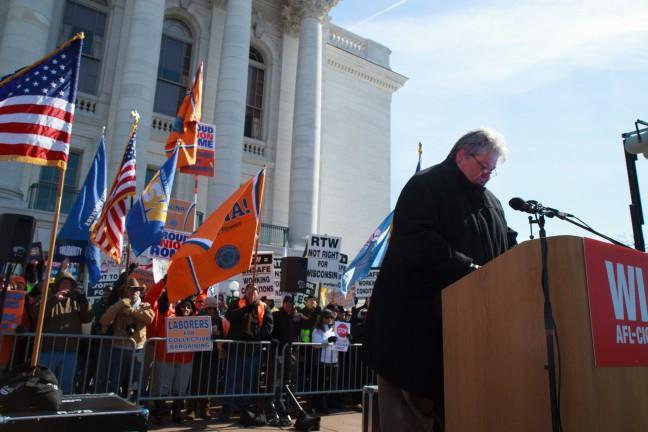The labor movement in the U.S. has had a long and sometimes troubled history. Most people can recall learning about its early development in the Gilded Age of the late 19th century, as the age of corporations began to consolidate wealth in the hands of the super-wealthy minority.
Unions began to organize in response to the growing economic inequality, culminating in the passage of the Wagner Act as part of the New Deal. The law protected the right of workers to unionize, the foundation of the movement today. In 1954, membership peaked as nearly 35 percent of wage and salary workers were members of a labor organization.
However, something else was happening, which began back in the ’40s while unions were on the rise. In 1947, the business community successfully overcame labor opposition to get Congress to pass the Taft-Harltey Act. The new law severely limited union striking and organizing activities, banned donations to political candidates and gave employers new powers to oppose unionization in their businesses. It also created the legal situation that has given rise to right-to-work legislation in 24 other states.
Within a decade of the act’s passage, union membership peaked and for a short time hovered around 30 percent, until it began a slow but continual decline. This decline coincides with a radical change in income growth among different classes of American workers. Real wages — wages with inflation accounted for — have been flat for decades. Since 2000, usual weekly wages have fallen 3.7 percent (in real wages) among workers in the bottom 10 percent of income distribution and fallen 3 percent among the bottom 25 percent. But among people near the top 5 percent of the distribution, real wages have risen 9.7 percent. In other words, in America today the rich are getting richer as the poor get poorer, and we can prove it quantitatively.
Income inequality has reached such an extreme that the “400 wealthiest Americans now own more than the ‘lower’ 150 million Americans put together.” Similarly, in 1983, a CEO made an average of 46 times more than an employee. In 2013, they made 331 times more than an employee. Perhaps the scariest part is the growth in this disparity is not going away. In fact, it’s accelerating, as the divide between rich and poor grows larger, faster.
In many ways, we are entering a second Gilded Age, as the rail and oil barons of the late 19th century have become today’s financial traders and bankers. Today, the wealthy collaborate with legislators, presumably to tilt the system ever more in their interest. They’ve seen enormous success, as top income tax rates dropped from 70 percent in 1970 to just 35 percent under George W. Bush.
However, history repeats itself. As income inequality surpasses levels seen in the pre-labor movement days, some experts believe that the labor movement is prime for a comeback. University of Wisconsin sociology researcher Barry Eidlin told Wisconsin Public Radio in early 2014, “We are in an economy where a large percentage of economic gains are going to a small fraction, the 1 percent. That’s creating a real sense that there’s something wrong … Those kinds of grievances are not going away.” He pointed out that Wisconsin actually saw a slight rise in private unionization in 2013, despite the anti-labor legislation and rhetoric emanating from the State Capitol and suggested a comeback is coming for unions.
So as we sit and wait for the State Assembly to pass right-to-work here in Wisconsin, do not lose all hope. In the short term the law will surely hurt unions, cut wage and further the growth in income inequality. However, such attacks continue to shed light on the role unions played in ending the first Gilded Age. Right-to-work, Act 10 and other attacks by business and political elites are just adding fuel to a fire just waiting to be lit. All we need is the spark for resurgence in the labor movement and an end to this second Gilded Age.
Alex Derr ([email protected]) is a junior majoring in environmental science and political science.














